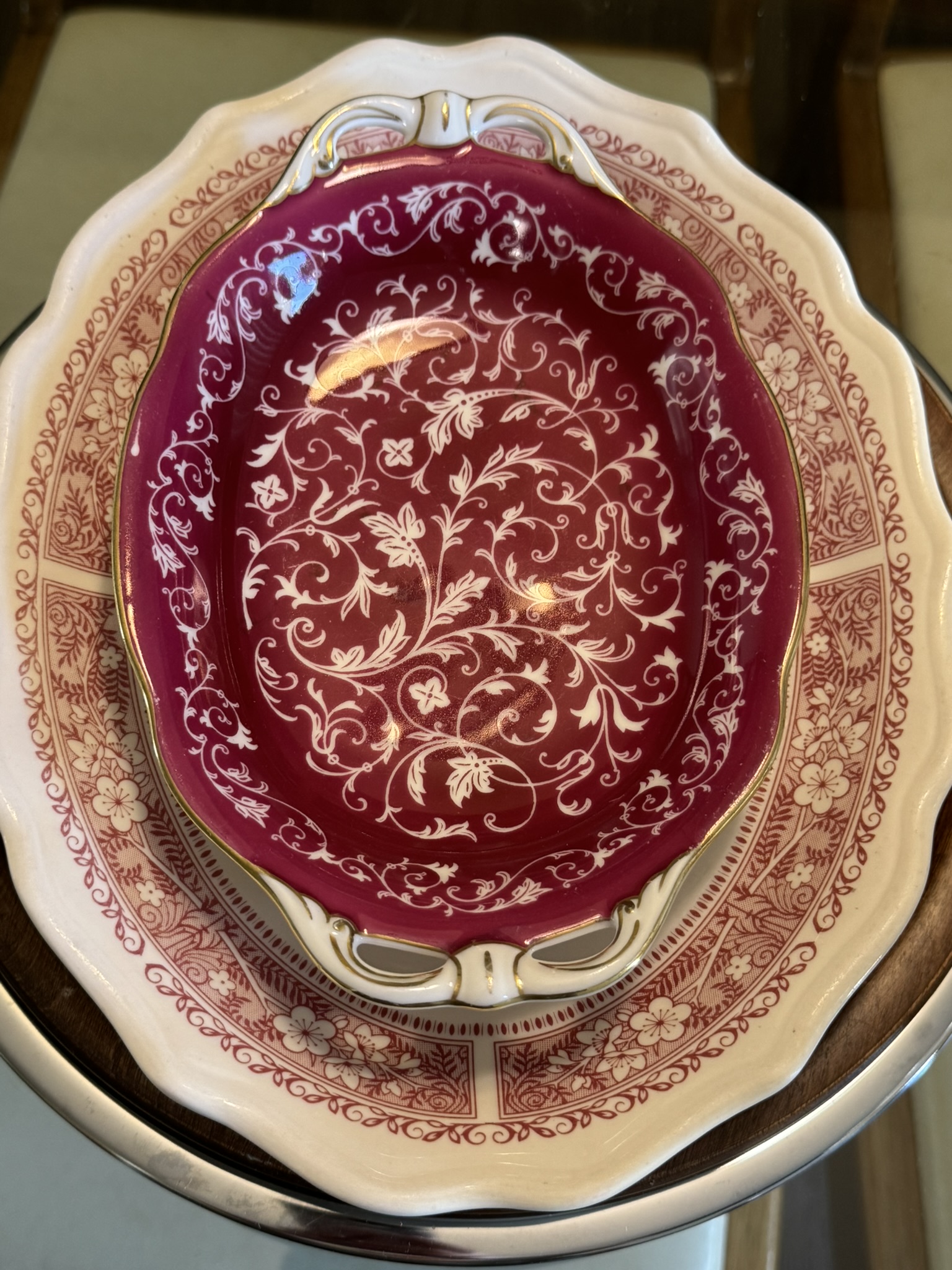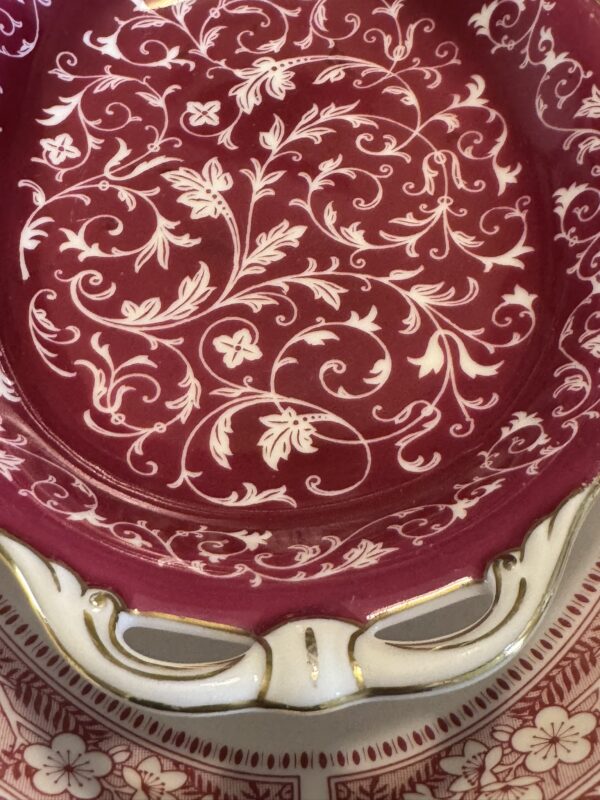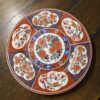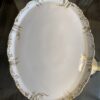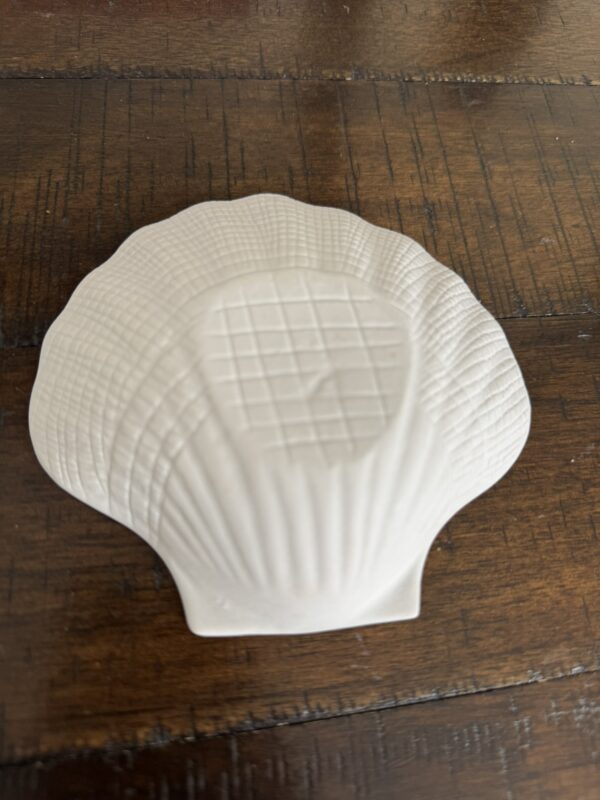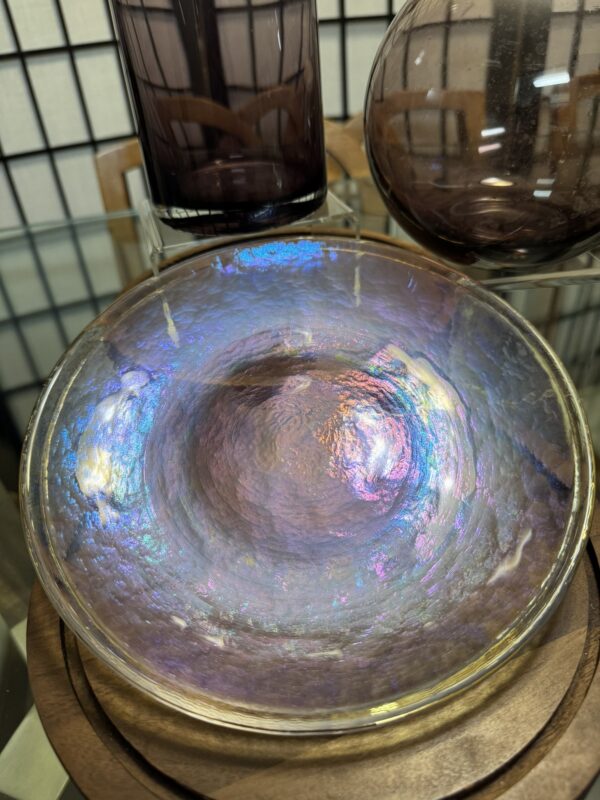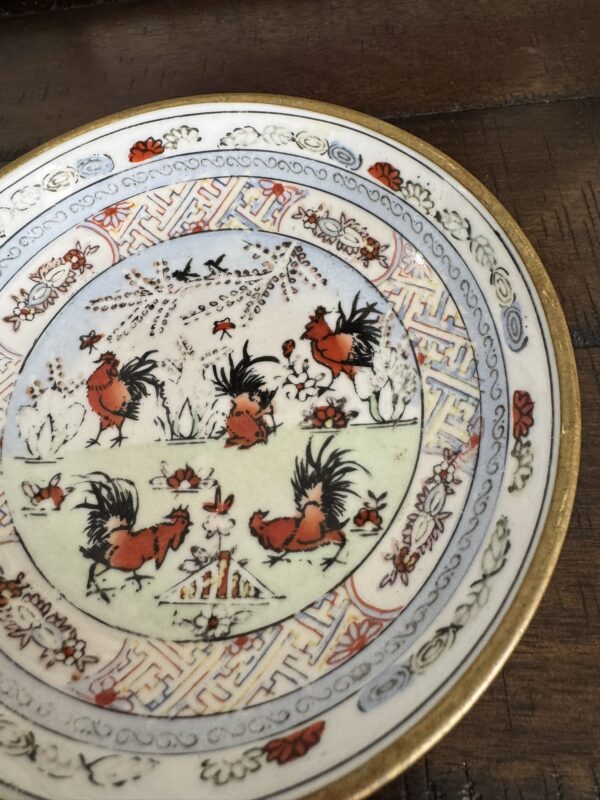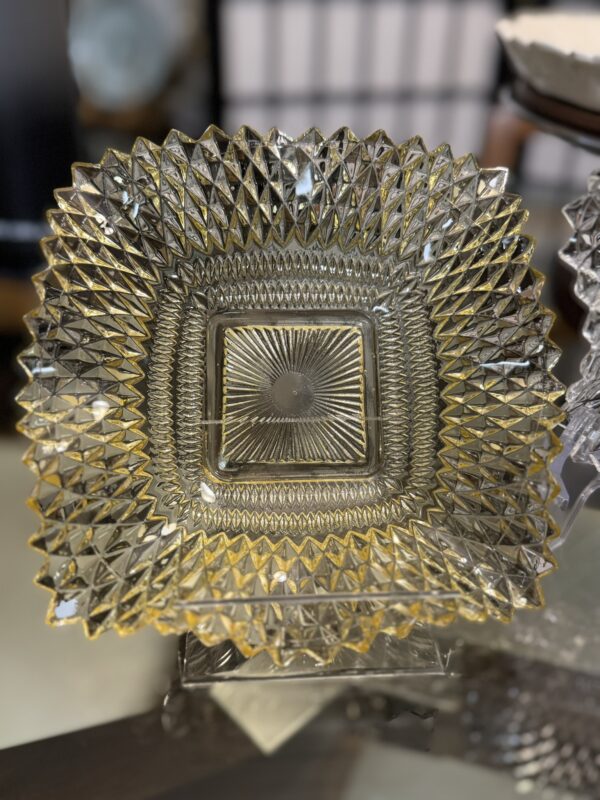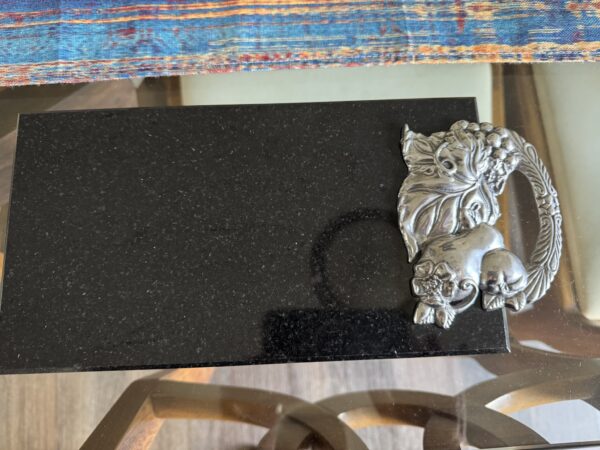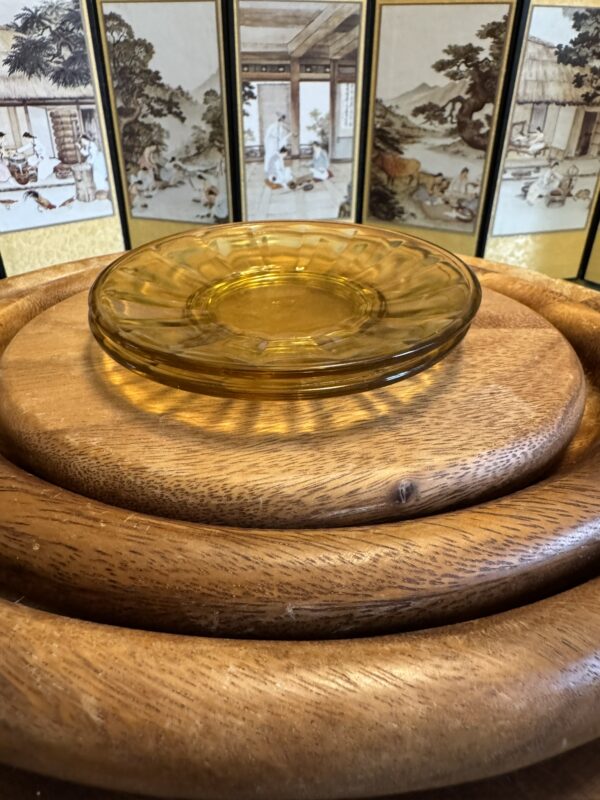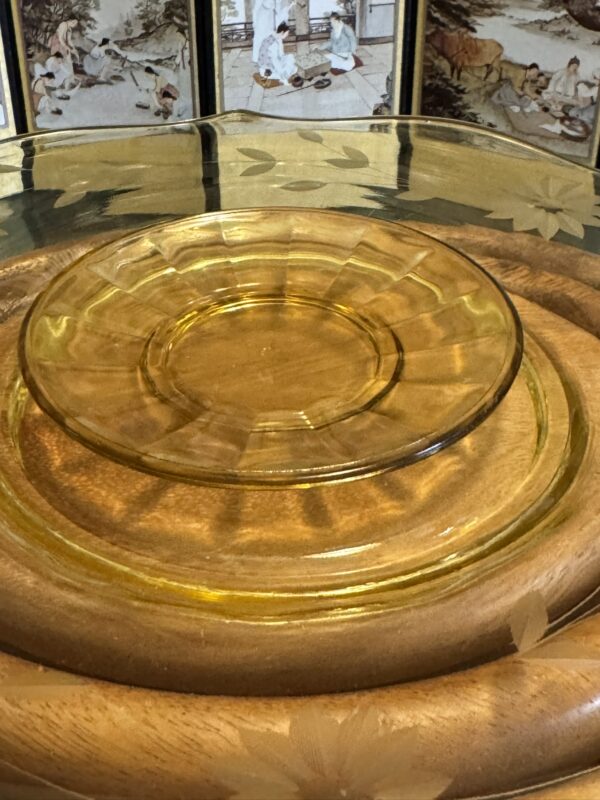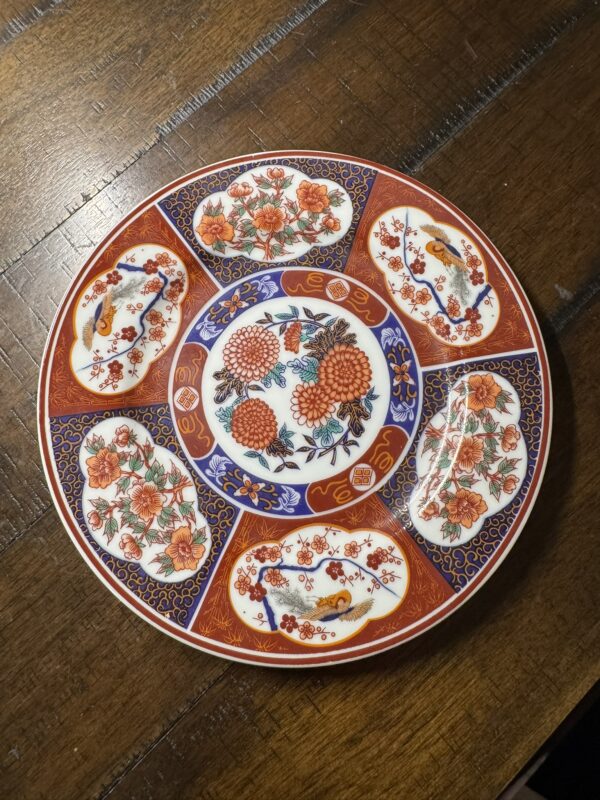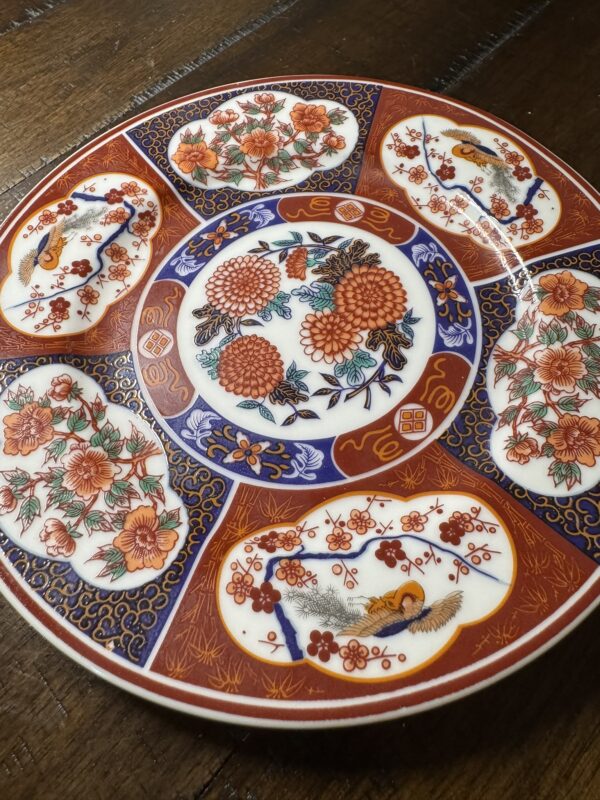Hutschenreuther Red Platter
$80.00
Commemorative Hutschenreuther porcelain side plate in deep red with scrolling white overlay, crafted circa 1914 in Bavaria.
• Time Period: Circa 1914
• Origin: Hohenberg, Bavaria
• Maker/Brand: Hutschenreuther
• Medium: Glazed porcelain
• Style: German Art Nouveau / Commemorative Decorative
• Condition: Excellent
• Decoration: Red glaze with scrolling white overlay; incised markings on back
• Dimensions: Oval, approx. 7 inches wide
1 in stock
Description
Hutschenreuther Red Plate — a richly hued and historically significant work of early 20th-century German porcelain artistry. Produced in Hohenberg, Bavaria, this commemorative plate was created around 1914 — likely in honor of the firm’s centennial. Its deep crimson ground and intricate white filigree design reflect both the luxury of Art Nouveau aesthetics and the masterful glazing techniques associated with Hutschenreuther’s output.
Founded in 1814 by Carolus Magnus Hutschenreuther, the company helped define Bavarian porcelain excellence with an emphasis on refinement, technical expertise, and royal-level ornamentation. This piece is especially significant for its celebratory nature, as suggested by its dual “1814–1914” marks and handwritten model references on the reverse. It embodies the high standards of European commemorative ware — bridging utilitarian form with prestige and decorative splendor .


